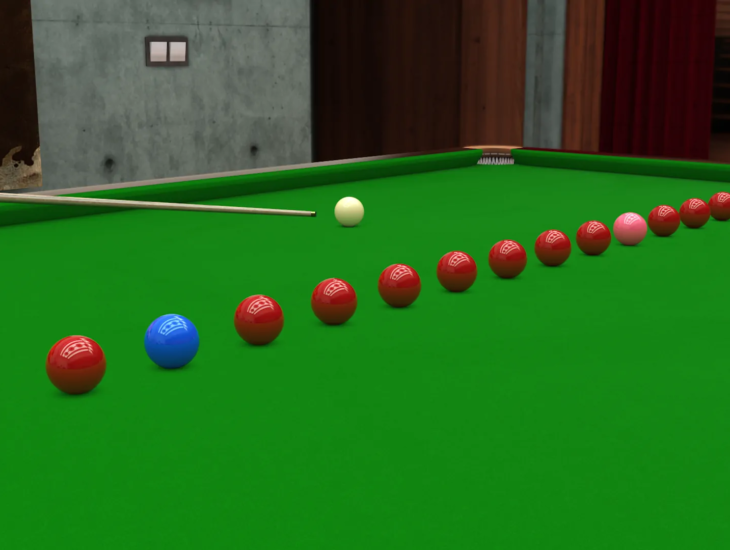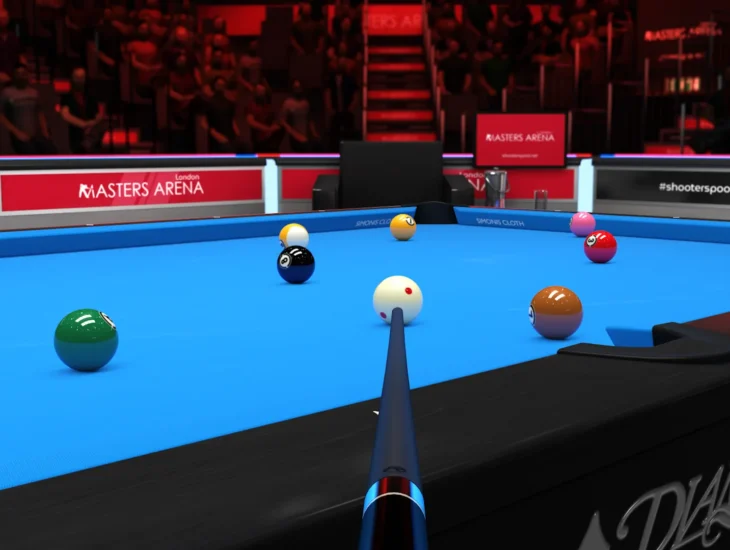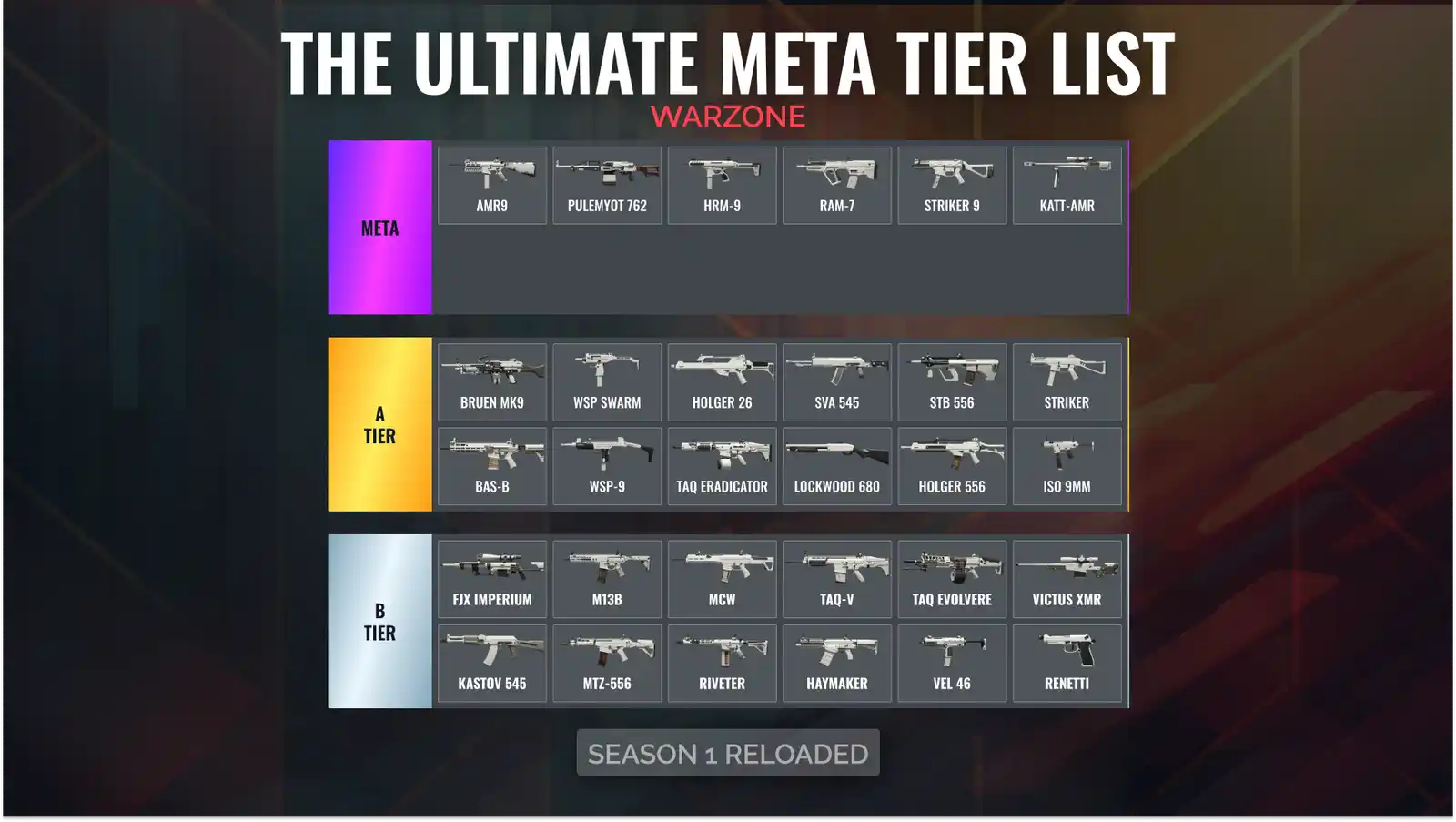Ever felt like your pool game is more about luck than skill? Do you watch pros sink shots effortlessly while your cue ball seems magnetically attracted to the pockets?
You’re not alone. Improving your pool game is achievable with the right knowledge and practice.
This article dives into practical shooting pool tips to improve accuracy. We’ll break down the fundamentals and offer actionable advice to help you elevate your game.
Mastering the Stance for Accurate Shots
A solid stance is the foundation of any good pool shot. It provides stability and allows for a smooth, controlled stroke.
Finding Your Balance
Balance is key. Distribute your weight evenly between both feet.
Imagine a line running from your sternum down to the floor. Your weight should be centered along this line.
Positioning Your Feet
Foot placement affects your body alignment. Experiment to find what feels most comfortable and stable.
Generally, your front foot should be slightly ahead of your back foot. This creates a natural angle towards the target.
Bending at the Waist
Avoid bending from your back. Instead, bend at the waist, keeping your back relatively straight.
This posture allows for a smoother, more pendulum-like stroke. It also reduces strain on your back.
Perfecting Your Grip for Enhanced Control

Your grip is the connection between you and the cue. A proper grip allows for maximum control and accuracy.
The Loose Grip
A common mistake is gripping the cue too tightly. A tight grip restricts your movement and can lead to erratic shots.
Instead, aim for a loose, relaxed grip. Imagine holding a bird – tight enough to keep it from flying away, but gentle enough not to hurt it.
Hand Placement
Experiment with hand placement to find what feels most comfortable. Some players prefer a higher grip, while others prefer a lower grip.
A general guideline is to grip the cue about one hand’s width from the balance point. This gives you good leverage and control.
Consistent Pressure
Maintain consistent pressure throughout your stroke. Avoid squeezing or tightening your grip as you swing.
This ensures a smooth, fluid motion and prevents unwanted movement of the cue.
Developing a Smooth and Consistent Stroke
The stroke is the engine of your shot. A smooth, consistent stroke is essential for accuracy and power.
The Pendulum Motion
Visualize your arm as a pendulum. Your shoulder should be the pivot point, and your forearm should swing freely.
Avoid using your wrist or elbow to generate power. This can lead to inconsistent shots.
Follow Through
Follow through is crucial. Continue your stroke through the cue ball, even after contact.
This ensures that you impart the desired spin and direction to the ball.
Practice Drills
Practice drills are essential for developing a consistent stroke. Focus on repeating the same motion over and over again.
Start with slow, deliberate strokes and gradually increase your speed as you become more comfortable.
Mastering Aiming Techniques for Pinpoint Accuracy
Aiming is arguably the most critical aspect of pool. Accurate aiming is the key to sinking balls consistently.
Ghost Ball Aiming
The ghost ball method is a popular aiming technique. Imagine a ghost ball sitting where you want the cue ball to hit the object ball.
Line up your cue with the ghost ball and aim for that spot. This helps you visualize the angle of the shot.
Fractional Aiming
Fractional aiming involves dividing the object ball into fractions. For example, you might aim for the 1/2 ball or the 1/4 ball.
This method can be helpful for visualizing different cut angles. It also helps you develop a better understanding of ball contact.
Peripheral Vision
Use your peripheral vision to align your cue with the target. This helps you maintain a consistent aiming point.
Avoid focusing solely on the object ball. Instead, try to see the entire shot, including the cue ball, object ball, and target pocket.
Understanding and Applying Spin
Spin can be a powerful tool in pool. Mastering spin allows you to control the cue ball and position it for your next shot.
Topspin
Topspin is applied by hitting the cue ball above center. It causes the ball to roll forward and travel further after contact.
Topspin is useful for gaining position and breaking clusters of balls.
Backspin
Backspin is applied by hitting the cue ball below center. It causes the ball to roll backward after contact.
Backspin is useful for controlling the cue ball and preventing it from traveling too far.
Sidespin
Sidespin is applied by hitting the cue ball to the left or right of center. It causes the ball to curve in the direction of the spin.
Sidespin is useful for navigating around obstacles and positioning the cue ball for difficult shots.
Practicing Spin Shots
Practice spin shots regularly to develop a feel for how the cue ball reacts. Experiment with different amounts of spin and see how they affect the ball’s trajectory.
Start with simple shots and gradually increase the difficulty as you become more comfortable.
Developing a Pre-Shot Routine
A pre-shot routine helps you focus and prepare for each shot. It creates consistency and reduces the chances of making mistakes.
Visualization
Visualize the shot before you take it. Imagine the cue ball striking the object ball and sending it into the pocket.
This helps you mentally prepare for the shot and increases your confidence.
Practice Strokes
Take a few practice strokes before you shoot. This allows you to feel the rhythm of your stroke and make any necessary adjustments.
Focus on maintaining a smooth, consistent motion.
Final Check
Before you shoot, take one final check of your alignment, grip, and stance. Ensure that everything feels comfortable and natural.
This helps you avoid making last-minute adjustments that can throw off your shot.
Mental Game: Staying Focused and Composed
Pool is as much a mental game as it is a physical one. Staying focused and composed is essential for performing your best.
Managing Pressure
Learn to manage pressure. Pool can be a stressful game, especially in competitive situations.
Practice staying calm and focused, even when you’re under pressure.
Positive Self-Talk
Use positive self-talk to boost your confidence. Remind yourself of your strengths and abilities.
Avoid negative thoughts or self-doubt.
Learning from Mistakes
Learn from your mistakes. Everyone makes mistakes in pool. The key is to learn from them and avoid repeating them in the future.
Analyze your shots and identify areas where you can improve.
Equipment Matters: Choosing the Right Cue and Accessories
Your equipment can have a significant impact on your performance. Choosing the right cue and accessories can help you improve your accuracy and consistency.
Cue Selection
Choose a cue that feels comfortable and balanced in your hand. Experiment with different weights and lengths to find what works best for you.
Consider the type of tip on the cue. Different tips provide different levels of grip and control.
Chalk
Use high-quality chalk to ensure a good grip between the cue tip and the cue ball. Chalk your cue before every shot.
This prevents miscues and allows you to impart spin more effectively.
Table Conditions
Pay attention to the table conditions. A clean, well-maintained table will provide a more consistent playing surface.
Dirty or worn felt can affect the ball’s trajectory.
Consistent Practice: The Key to Improvement
The most important tip of all is to practice consistently. The more you practice, the better you will become.
Regular Practice Sessions
Schedule regular practice sessions. Even short, focused practice sessions can be beneficial.
Aim to practice at least a few times per week.
Focused Drills
Focus on specific drills during your practice sessions. This allows you to target your weaknesses and improve your overall game.
Examples include aiming drills, stroke drills, and position play drills.
Playing Games
Playing games is also important. This allows you to apply what you’ve learned in practice to real-game situations.
Play against different opponents to challenge yourself and improve your skills.
Conclusion
Improving your pool accuracy is a journey that combines fundamental techniques with consistent practice. By focusing on your stance, grip, stroke, aiming, and mental game, you can significantly elevate your performance. Remember to choose the right equipment and practice regularly to reinforce these skills.
What are your go-to shooting pool tips to improve accuracy? Share your experiences and let’s learn from each other!
Frequently Asked Questions (FAQ)
1. How often should I practice to see improvement in my pool game?
Aim for at least 2-3 practice sessions per week. Consistency is key, even if the sessions are short (30-60 minutes). Focus on specific drills to target your weaknesses.
2. What is the most common mistake beginners make when shooting pool?
Gripping the cue too tightly is a common mistake. A relaxed grip allows for a smoother, more controlled stroke, leading to better accuracy.
3. How can I improve my aiming accuracy quickly?
Start with simple, straight shots and focus on visualizing the line between the cue ball and the object ball. The “ghost ball” aiming method can be particularly helpful for beginners. Practice these shots repeatedly to build muscle memory and improve your eye for angles.










